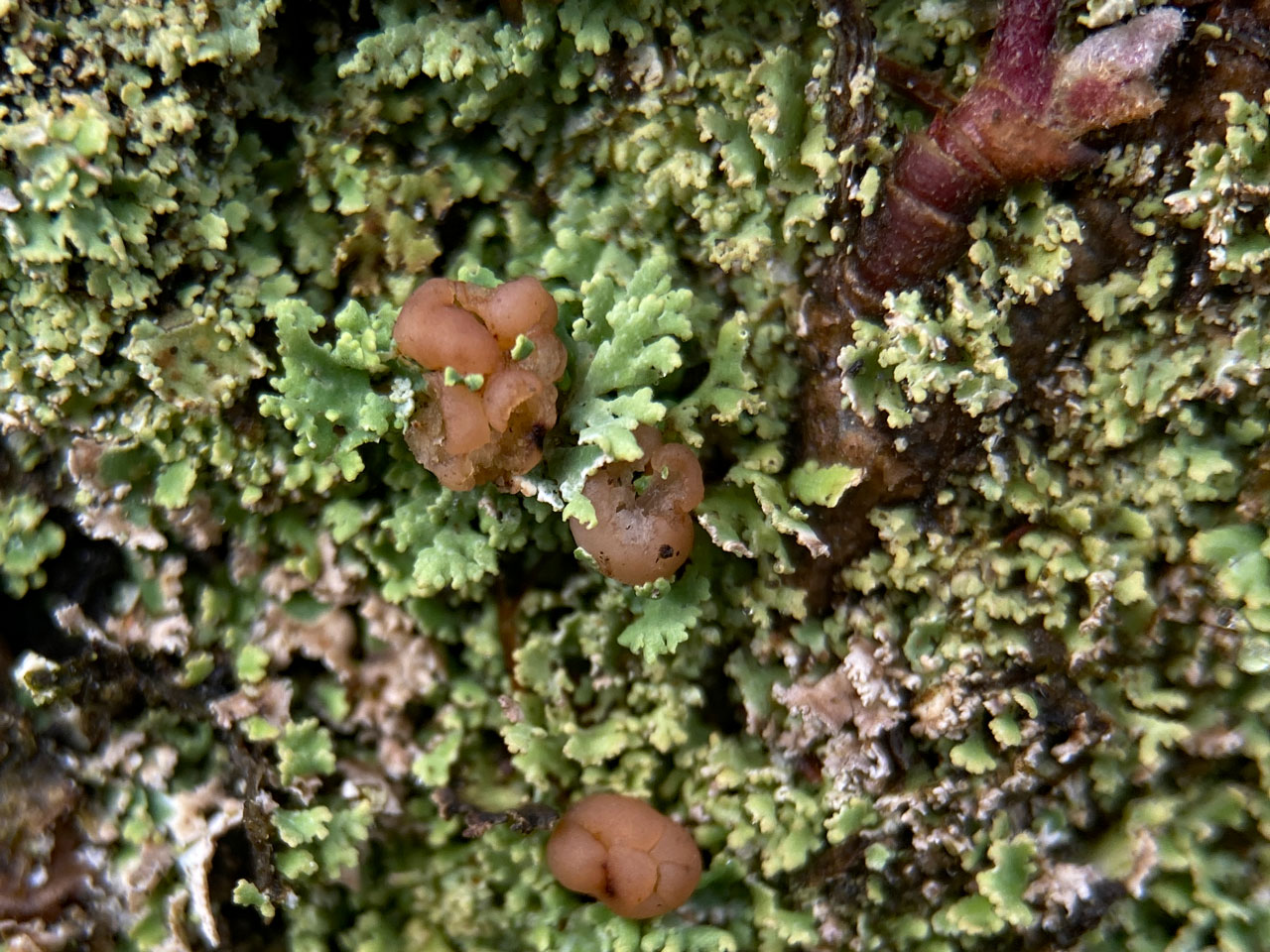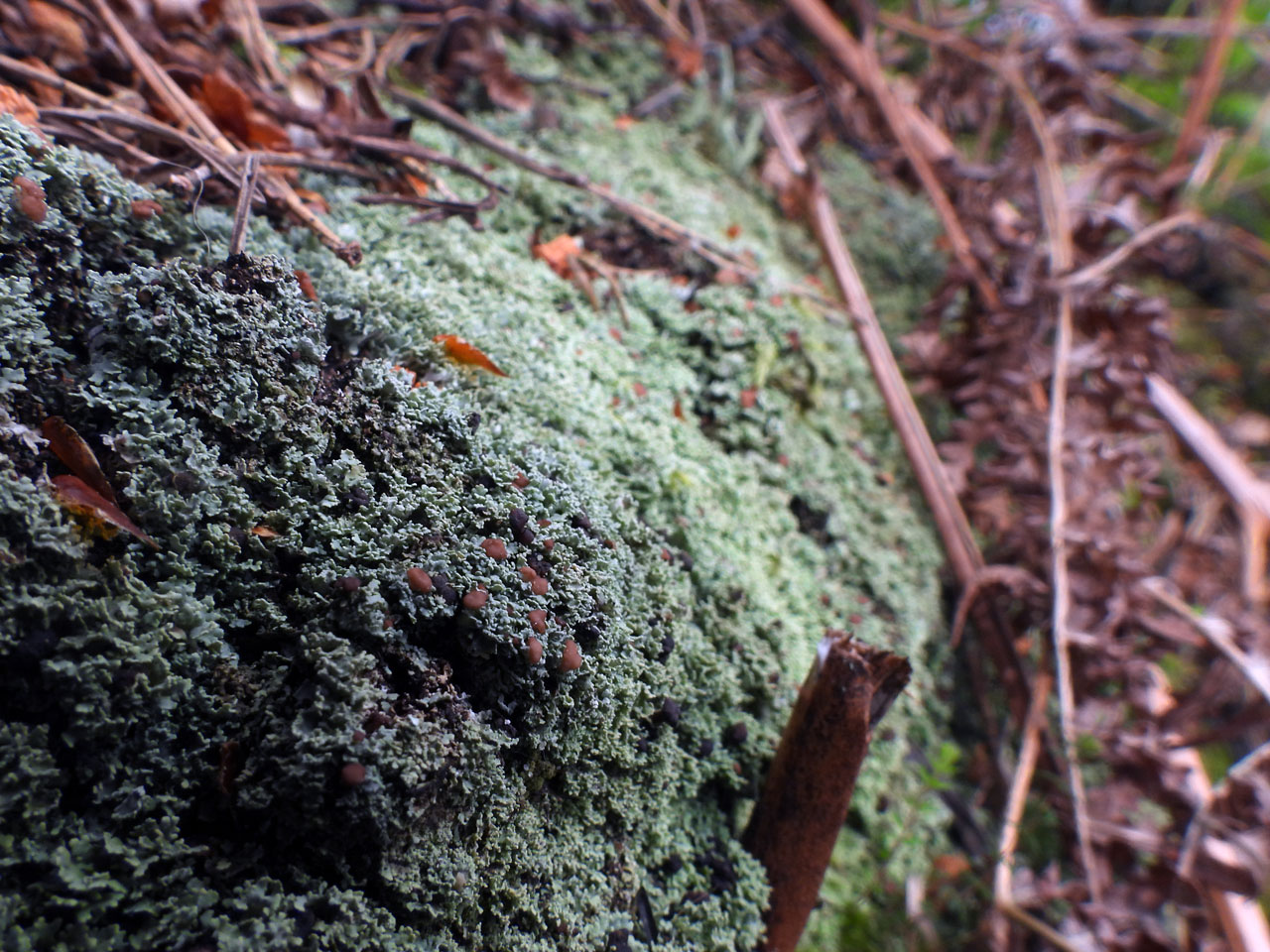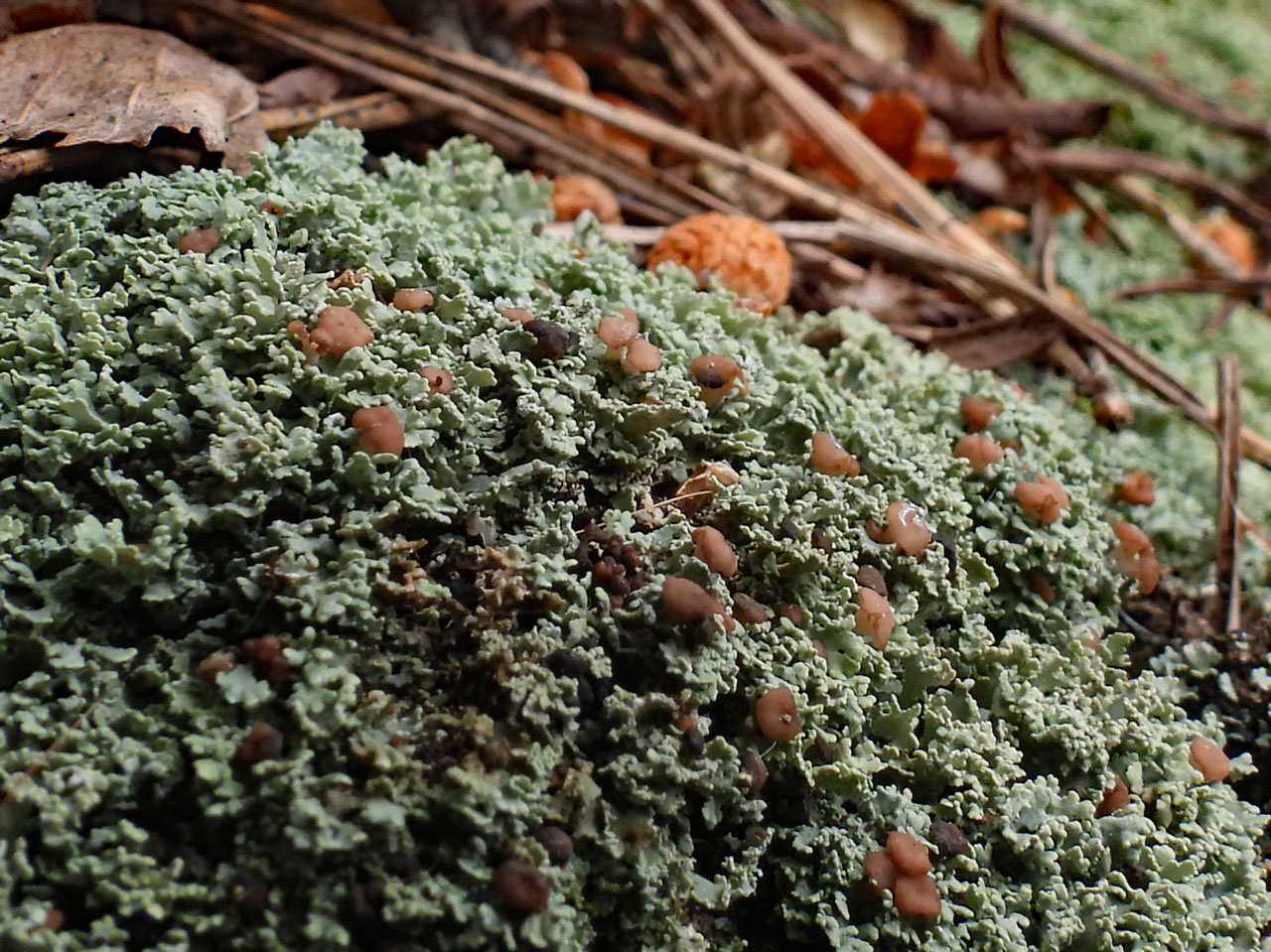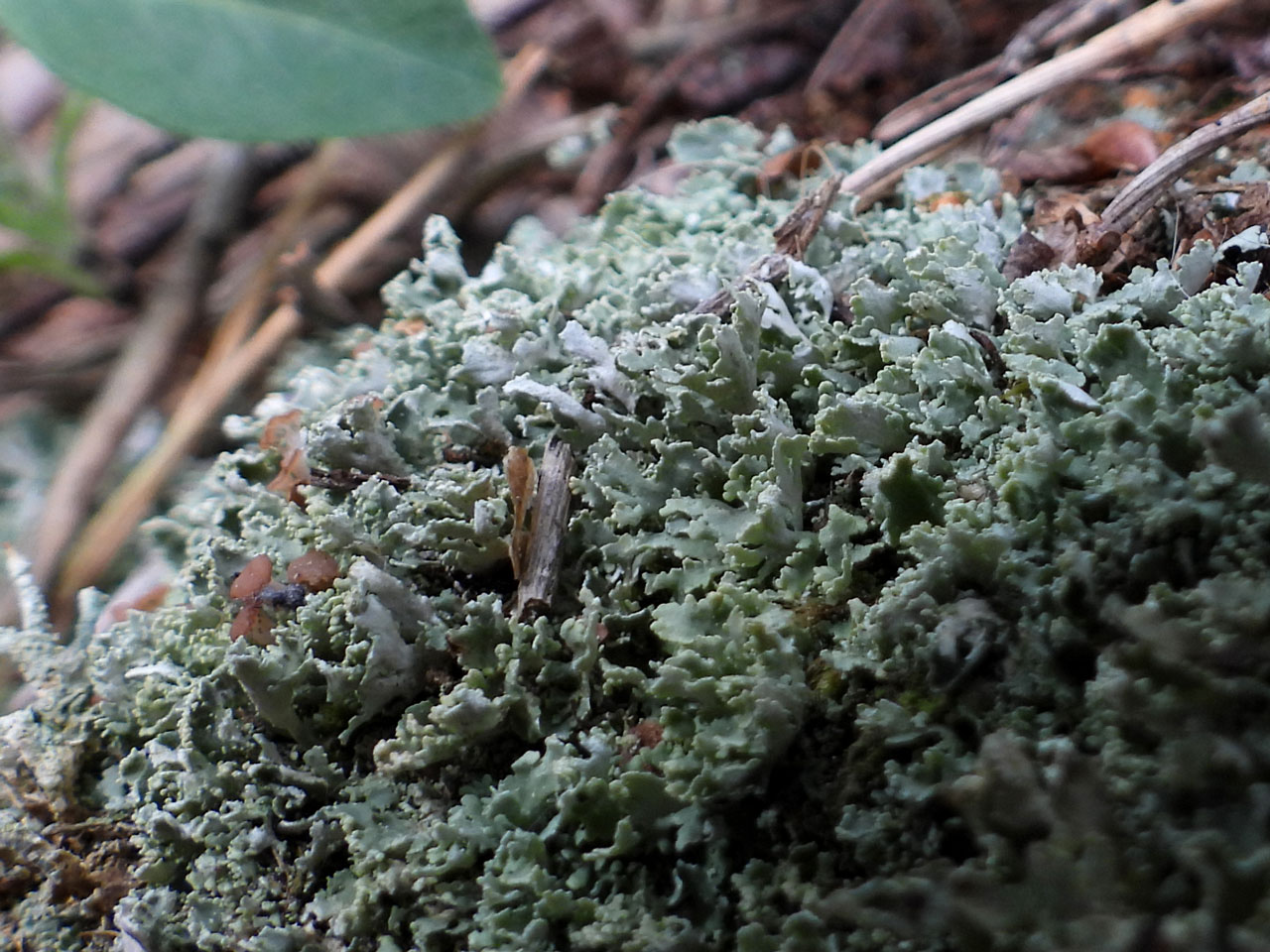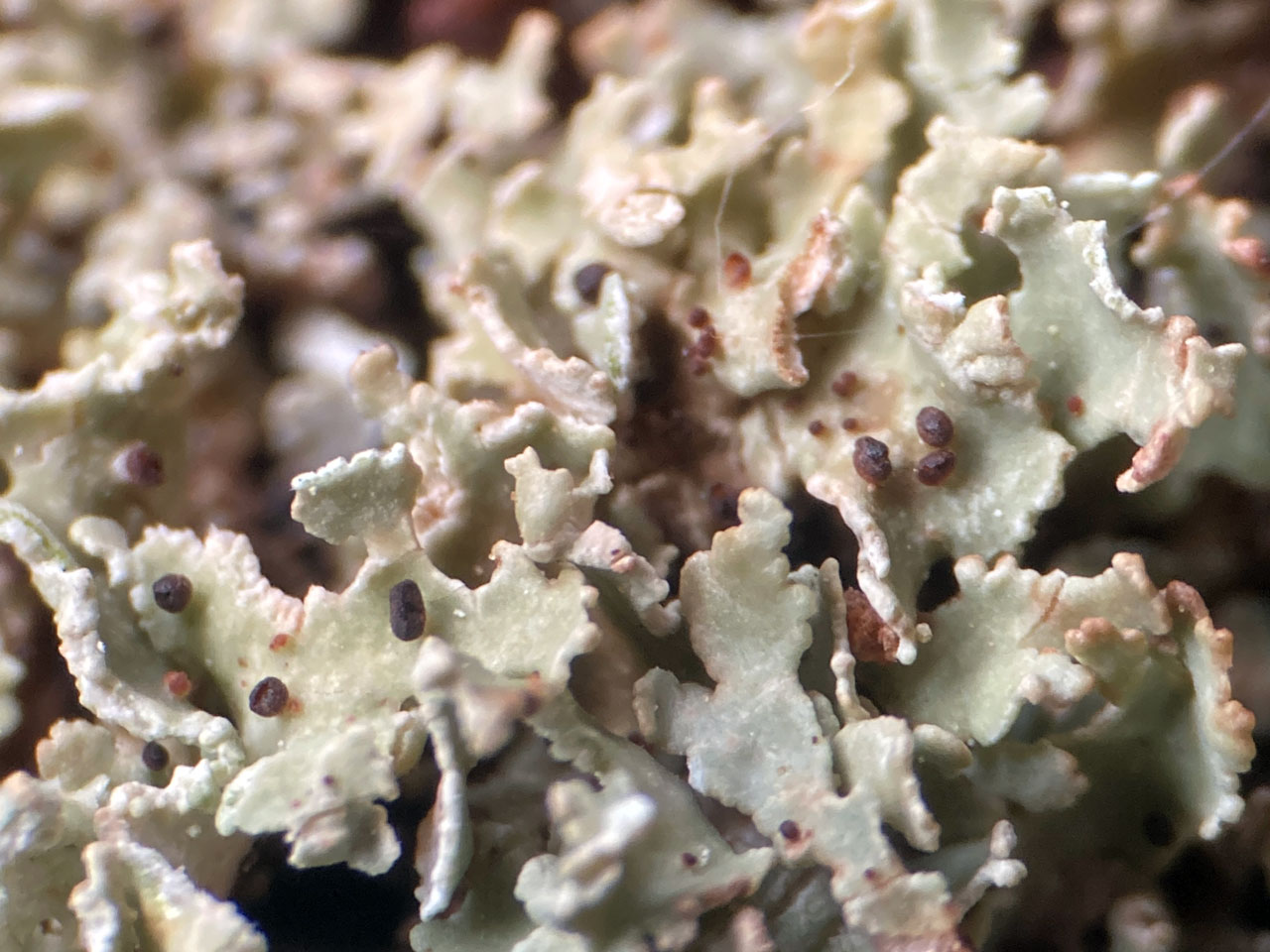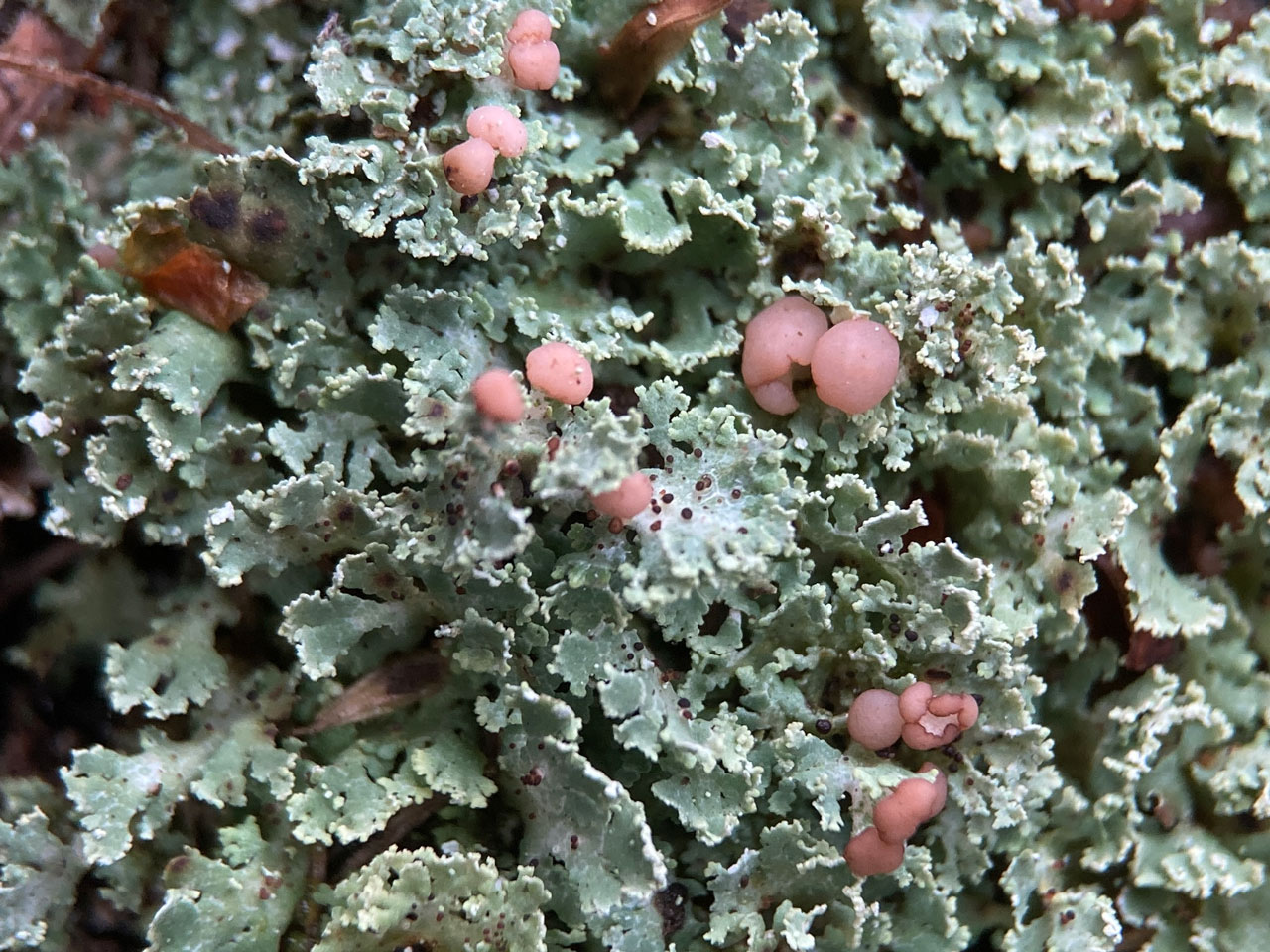Cladonia caespiticia
Cladonia caespiticia occurs as squamule mats on acid mossy tree trunks, stumps and earth banks, chiefly in sheltered situations. It is often sterile, when it is rather difficult to separate from sterile C. coniocraea, however, when fertile the tiny naked (decorticate) podetia, barely presenting the single brown swollen apothecia above the squamules are highly distinctive. It could be mistaken for C. parasitica in habit; it also has crowded basal squamules but these bear coralloid-sorediate granules at their margins and the podetia are conspicuously elevated.
A species mainly found in long-established, mature woodlands and rarely in open habitats in the west, but probably over looked in the eastern lowlands on humid acid banks.
Podetia to 0.3 cm tall (often absent), decorticate, ± translucent when wet or sometimes with a yellowish tinge, devoid of algal cells. Basal squamules dominant, 2–7 mm long and to 1.5 mm wide, often irregularly incised, crenulate and ± erect, often well-developed and forming dense, low cushions; upper surface greyish or brownish green; lower surface white, not sorediate. Apothecia inconspicuous, brown, single, rounded or ± tuberculate, sessile or on short podetia. Pycnidia brown-black, constricted at the base, on short stalks, on the upper surface of the basal squamules, with colourless gel. Thallus C–, K–, KC–, Pd+ red, UV– (fumarprotocetraric acid).
Characterised by the tendency to form ± compact cushions, the numerous small clusters of incised squamules bearing pycnidia as well as apothecia, the latter either sessile or on very short algal-free ± white pellucid stalks when wet. The apothecia, however, are typically absent and sterile thalli are difficult identify, however, the brown-black pycnidia which are constricted at the base, can be present and are distinctive. The rapid Pd+ red reaction is helpful for identification. Resembles the predominantly lignicolous C. parasitica in habit, which also has crowded basal squamules but these bear coralloid-sorediate granules at their margins and the podetia are conspicuously elevated, 0.5–2 cm tall and ± corticate, K+ orange (thamnolic acid).
On mossy tree trunks, stumps and earth banks chiefly in sheltered situations, often in long-established, mature woodlands; widespread but rather local, easily overlooked and often sterile, when it cannot be identified with confidence. Rare on sheltered banks in heathlands and shaded mossy rocks in woods.

S. & W. Britain and Ireland, scattered in E. England and E. Scotland.
Pino-Bodas, R., Sanderson, N., Cannon, P., Aptroot, A., Coppins, B., Orange, A. & Simkin, J. (2021). Lecanorales: Cladoniaceae, including the genera Cladonia, Pilophorus and Pycnothelia. Revisions of British and Irish Lichens 19: 1-45. Link
Text by Neil A Sanderson, based Pino-Bodas et al (2021)
